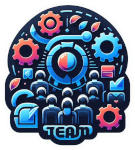
Adopting the Team Software Process (TSP) can significantly enhance software development practices, leading to better productivity, higher quality, and greater predictability. However, like any major organizational change, the transition to TSP can present several challenges. This article addresses common obstacles teams may face when adopting TSP and provides strategies for overcoming resistance, ensuring stakeholder buy-in, and maintaining momentum during the transition.
Common Challenges in TSP Adoption
1. Resistance to Change
Resistance to change is a common challenge when implementing new processes. Team members may be comfortable with existing practices and hesitant to adopt new methodologies.
Strategies to Overcome Resistance
- Communicate Benefits: Clearly communicate the benefits of TSP to the team, such as improved quality, predictability, and productivity.
- Involve Team Members: Involve team members in the planning and decision-making process to ensure they feel valued and heard.
- Provide Training: Offer comprehensive training to help team members understand TSP principles and practices, reducing fear of the unknown.
- Showcase Success Stories: Share examples of successful TSP implementations to demonstrate its effectiveness and build confidence.
2. Lack of Executive Support
Without strong support from executive management, TSP adoption can struggle to gain traction and secure necessary resources.
Strategies to Secure Executive Support
- Present a Compelling Case: Prepare a detailed presentation that highlights the benefits of TSP, including data from successful implementations and potential ROI.
- Align with Business Goals: Show how TSP aligns with the organization's strategic goals, such as improving product quality, reducing time-to-market, and increasing customer satisfaction.
- Seek Champions: Identify and engage executive champions who can advocate for TSP within the organization.
3. Inadequate Training and Resources
Insufficient training and lack of resources can hinder the successful adoption of TSP.
Strategies to Provide Adequate Training and Resources
- Organize Workshops: Conduct workshops and training sessions to introduce TSP concepts and practices.
- Leverage External Experts: Hire external consultants or trainers with expertise in TSP to provide guidance and support.
- Offer Ongoing Support: Establish a support system where team members can seek help and clarification as they navigate the transition.
4. Integration with Existing Workflows
Integrating TSP with existing workflows can be challenging, especially if the current processes are deeply ingrained.
Strategies to Facilitate Integration
- Start with a Pilot Project: Implement TSP in a pilot project to identify potential challenges and refine the process before rolling it out across the organization.
- Gradual Integration: Gradually integrate TSP practices into existing workflows, allowing the team to adapt incrementally.
- Customize Practices: Tailor TSP practices to fit the unique needs and context of your organization while maintaining the core principles.
5. Maintaining Momentum
Sustaining the initial momentum and enthusiasm for TSP can be difficult over the long term.
Strategies to Maintain Momentum
- Regular Reviews: Conduct regular reviews and retrospectives to assess progress, celebrate successes, and identify areas for improvement.
- Continuous Improvement: Foster a culture of continuous improvement where the team is encouraged to experiment, learn, and adapt.
- Set Milestones: Establish clear milestones and goals to keep the team focused and motivated.
- Recognize Achievements: Recognize and reward the team's achievements to boost morale and reinforce the value of TSP.
Case Studies and Examples
Case Study 1: Overcoming Resistance at JKL Technologies
Background: JKL Technologies, a mid-sized software development firm, faced significant resistance from its development team when introducing TSP.
Implementation: The company addressed concerns by involving team members in the planning process, providing extensive training, and highlighting the benefits of TSP. They also started with a small pilot project to demonstrate its effectiveness.
Results: The initial resistance gradually subsided as team members saw the positive impact of TSP on project outcomes. JKL Technologies successfully scaled TSP across other projects, leading to improved quality and predictability.
Case Study 2: Securing Executive Support at MNO Enterprises
Background: MNO Enterprises, a large software development company, struggled to secure executive support for TSP adoption.
Implementation: The TSP implementation team prepared a compelling case that highlighted the alignment of TSP with the company's strategic goals. They presented data from successful implementations and identified executive champions to advocate for TSP.
Results: With strong executive support, MNO Enterprises successfully implemented TSP, leading to higher productivity and customer satisfaction. The commitment from top management helped ensure the necessary resources and support for the transition.
Conclusion
Adopting the Team Software Process (TSP) can significantly enhance software development practices, but it requires careful planning and execution to overcome common challenges. By addressing resistance to change, securing executive support, providing adequate training, integrating TSP with existing workflows, and maintaining momentum, organizations can successfully implement TSP and achieve its full benefits. In this series, we have explored the principles, practices, tools, and strategies for effective TSP implementation, providing a comprehensive guide to help your team succeed.
Stay tuned to our blog at slaptijack.com for more in-depth tutorials and insights into modern software development practices. If you have any questions or need further assistance, feel free to reach out. Embrace the power of TSP and transform your software development process!
